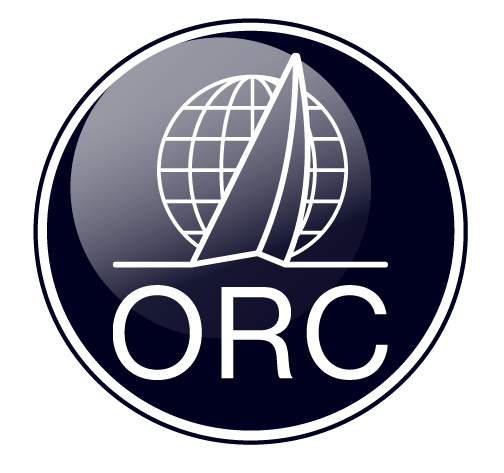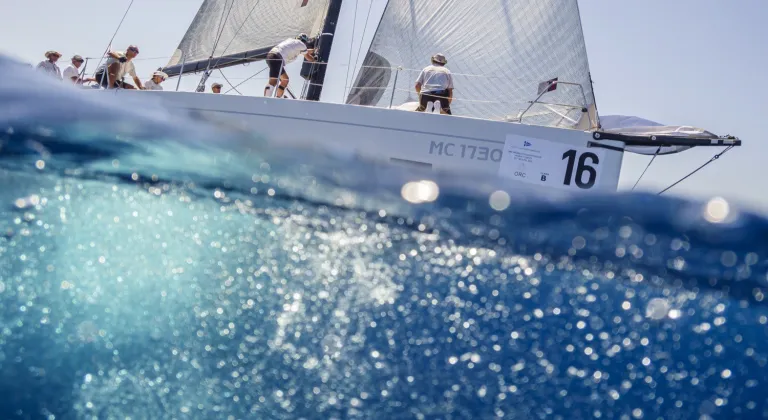ORC Rating Systems
The fundamental principle #TheEqualChanceToWin - refers to how the ORC system can rate nearly every kind of boat in a scientific and unbiased manner to create fair ratings, thus giving all boats an equal chance to win on the race course.
Why do we need rating systems?
To allow boats of different sizes and characteristics to race each other with an equal chance to win. Rating or handicaps correct their elapsed time difference and put them on the same level.
What is an ideal rating system?
The search for a perfect rating system is as old as sailboat racing itself. Boat owners, sailors, designers and handicappers are always looking for solutions that work as boat designs change with time. However, regardless of what rating system is actually in use, an ideal rating system should have the following features:
Be fair to all boats, from cruisers to racers, with no strong typeforms in design
Be open, transparent and freely available
Have rules that are objective, non-biased and open to input
Have ratings that are simple, but accurate
Have flexible scoring options for use with different course types
Be easy to use and understand
Be locally managed but available worldwide
ORC uses science
ORC Rating Systems use science and technology to develop its handicap systems. With a complete set of measurement of the hull with appendages, propeller, stability, rig and sails, it is then possible to use computer software called a VPP – for Velocity Prediction Program – to calculate the theoretical speeds for the boat in various wind conditions. With this powerful tool, that is updated yearly by a panel of experts in aero and hydrodynamic science, the ORC rating system can tell you the performance differences between different boats in different wind conditions and course geometries.
Use of this system can help answer even more detailed questions, such as at what wind speed and wind angle will the asymmetric spinnaker be faster than the jib or genoa while reaching. Or what is the optimum beat or run VMG for a given wind speed.
And the system works for nearly every possible boat type: there are almost 96,000 records of ORC certificates issued worldwide in last 20 years for boats ranging from 18 to 100 feet. These include standard production boats, one design offshore classes, custom boats and prototypes, classic or vintage boats.
ORC is not type-forming
The ORC rating system does not compare the characteristics of one boat to another; it measures how a racing crew can reach their boat’s theoretical performance potential.
Thanks to the VPP, ORC can calculate the theoretical speeds that a boat should achieve on a given race course in the given conditions. The closer the crew is to those speeds, the better results they will get. Results of the ORC World and European Championships in last few years have shown that a diversity of boat types, sizes and characteristics were among top 10 in the final results, with very small differences in corrected times.
ORC is transparent
The ORC rating systems have no secret factors, everything is calculated and documented, with complete descriptions of the VPP other formulations available on this website. In fact, the ORC VPP software is available for purchase for any yacht designer, boat owner or sailor interested in detailed use of the system. There are currently about 75 subscribers to the ORC VPP each year, and include the majority of the world’s well-known yacht design offices and sailmakers.
Furthermore, this system is available to an even broader audience through the ORC Sailor Services. This system has valuable features for any user:
Free copies of any ORC certificate issued since 2009. This allows you to see the measurements and ratings of any boat in the system - yours or your competitor’s – for free so long as they have had a certificate issued by any ORC rating authority world wide.
For a small fee, test certificates can be issued on any measured boat in the system.
Rating optimizations can be performed by making changes in the measurement test file to the rig, sails or crew weight and running a test certificate to explore their effects on rating.
Use of the ORC Speed Guide gives an even more accurate look at the performance of the boat with a complete set of polar diagrams used to trim the boat in order to achieve the best possible speed in any particular conditions. This gives an easy answer to questions such as: What is the best angle to change to the spinnaker? or When will the headsail set flying be faster? or When will the jib be faster than the asymmetric spinnaker?
Target Speeds are available, as a customized prediction of performance targets for that boat on one of the most common type of courses used in competitive offshore sailing
For those who need to know their compliance to stability standards, the Stability and Hydrostatics data sheet with all its relevant data is also available
ORC is objective
ORC Rating Systems are based on science and complete boat measurement. There is no guessing or any subjective element. Since science progresses in our understanding of how sailboats behave, each year the system is updated to improve its accuracy. This is the main task of the International Technical Committee (ITC), which is composed of well-known yacht designers and experts in aero and hydrodynamics, materials technology and boat construction. ITC is constantly researching ways to improve the ORC VPP through use of both new and established research tools, such as tank testing, wind tunnel studies, and CFD methods and the tools available in modern naval architecture, as well as ongoing analysis of race results during the season.
Another important aspect of transparency in ORC is that sailors can have input for rule changes through their ORC Nominating Body, which is the national offshore class association or other entity recognized by the national sailing federation in countries where there is ORC activity. Based on the number of certificates issued during the year, countries are eligible to one, two or three seats in the Congress, which is the main body accepting submissions based on recommendations by appropriate committees. Submissions made by Nominating Bodies must be made 9 weeks prior to when the Congress meets once yearly at its Annual General Meeting, which is timed to be coincident with the ISAF AGM each November.
Certificates are accurate and simple
ORC Rating Systems are administered by the National Rating Offices established worldwide in each country that has active offshore rating. There are two forms of the rating systems that are fully compatible using the same measurements and the same VPP: ORC International (ORCi) and ORC Club. ORCi is based on a complete boat measurement as defined by the International Measurement System (IMS). ORC Club uses the same data, but it may be accepted as being declared by the owner or obtained from any other source, including photos, drawings, designs or data from identical or similar boats.
In use, ORCi is a complete measurement rule and it is applied in all countries at the same level, while ORC Club is administered locally where each country may decide the level of measurement needed and even translate the complete certificate into the local language. ORCi is intended for use on World, Continental, Regional and National level as well as major international offshore races, while ORC Club is as its name implies designed for Club-level racing that can go up to national championship level. Both systems having the same rating and scoring options and can be scored together in any races.
Of course, due to better quality of measurement data, ORCi certificates will be more accurate and give more favorable ratings. Because the systems are so compatible, it is very easy for owner who has an ORC Club certificate to upgrade to ORCi – just contact your local measurer or rating authority.
ORC is flexible
One of main advantages of the ORC Rating Systems is the variety of scoring options which can be selected locally based on expected wind conditions, the type of racing or fleet composition. These can be simple and applied to entry-level competition, or complex to get the most accuracy possible at high levels of competition. Ratings are expressed in either Time-on-Time (ToT) or Time-on-Distance (ToD) formats.
Simple scoring options common in ORC Club racing include: single number Time-on-Distance or Time-on-Time ratings, or Performance Curve Scoring (PCS)ToD or ToT for three different wind strengths. All scoring coefficients are given for both Windward / Leeward (50% beat - 50% run) and Coastal / Long Distance (with different percantages of beat, reach and run) races.
The most complex but accurate scoring type used in ORC is Performance Curve Scoring (PCS). ORCi certificates provide a range of ratings, expressed as time allowances in sec/NM for different wind conditions in the range of 6 – 20 knots of true wind speed for an optimum beat, and for 52, 60, 75, 90, 110, 120, 135, 150 degrees of true wind angle for an optimum run. These time allowances can therefore be used in PCS as a unique feature that is fundamentally different and much more precise than any other handicap system. It can rate different boats for different race conditions and course configurations by giving the boat’s theoretical predicted speeds for any wind condition and direction.
ORC is easy to use
Both ORC International and ORC Club certificates contain a scaled boat drawing with all rig and sails measurements, which makes it easy to review. Data of all certificates issued worldwide are available on the ORC Database website in the form of RMS files used by different Scoring Software. ORC Scorer software is available free on this website, as well as RMS files updated automatically whenever a new certificate is created and contains data from the last valid certificate for each boat sorted by the relevant national rating office.
It’s easy to get an ORC Club certificate for your boat. Just fill-out this on-line form.
ORC is thinking locally and acting globally
National Rating Offices have several functions, including supervising the measurement and rating of yachts, supporting ORC racing by administering to their national fleets, and issuing ORC certificates. For countries where a National Rating Office is not yet established, the central ORC Rating office can give support by issuing certificates. ORC certificates are valid throughout the world regardless of where they are issued.






